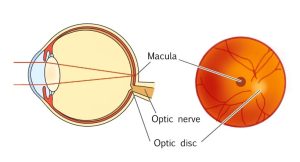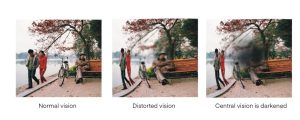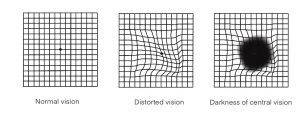- What is Age-related macular degeneration(AMD)
- Types of AMD
- Risk factors of AMD
- The symptoms of AMD
- AMD exam sequence
- AMD treatment
- How to prevent AMD
- Q&A about AMD
The macula, where photoreceptor cells that distinguish shapes and colors are concentrated, is an important tissue that greatly affects visual acuity. However, with age, bleeding and swelling of the macula may occur and visual acuity is reduced. This is an age-related macular degeneration (AMD), a condition that can lead to blindness if left untreated.
“Can anyone notice the sign of AMD?”
”How do I check it out myself?“
“How should I treat it?”
Such questions shall be explained in this article, as well as:
・What is AMD?
・How does the onset of the disease change the way you see?
・How to prevent AMD
Since this disease can occur to anyone over the age of 40, it is important to see an ophthalmologist regularly even if there is nothing wrong with your eyes. Early detection and early treatment are key to maintaining healthy vision.





